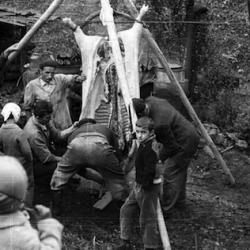Alan Hayward (Creation and Evolution) summarizes some of the evidence for an old earth. Some lines of evidence are fairly powerful. He points to sandwich structures on the ocean floor: A base of hardened sediment with fossils, a layer of large coral reefs, an upper layer of sediment that buried the coral reef (86).
If, he argues, the Flood laid down the lower layer of sediment, what caused the upper layer? And how did the coral reef have time to grow to its current size before being buried again?
Other lines of evidence have little probative force. The Eniwetok reef, for instance, has a depth of some 4600 feet. Hayward notes under the most ideal conditions reefs grow at a rate of 1.5 inches a year, and that discounts the effects of earthquakes, tidal waves, hurricanes, which can destroy parts of a reef.
He estimates: “if the world is only 10,000 years old, and that reef began growing on Creation Day 5, it would have had to develop at an average rate of five and a half inches a year” (85). This is virtually impossible, since “Nature imposes strict limits on the growth rate of a reef” (84).
Creationists have long responded to this sort of argument by pointing out that creation was formed “with the appearance of age.” God made trees, not merely seeds; he made mammals, not merely sperm and egg. Is it so hard to believe that He created reefs – not merely coral polyps who form reefs? How thick was the Eniwetok reef on Day 5? Hayward’s argument here works only if he makes the evolutionary premise that things started small and simple.
That things started full-grown and complex is a point worth reflecting on. God created systems and mature things, rather than creating simply the building blocks for such systems. Arguably, he created coral deposits along with the coral polyps who leave the deposits. What might that tell us about God?












